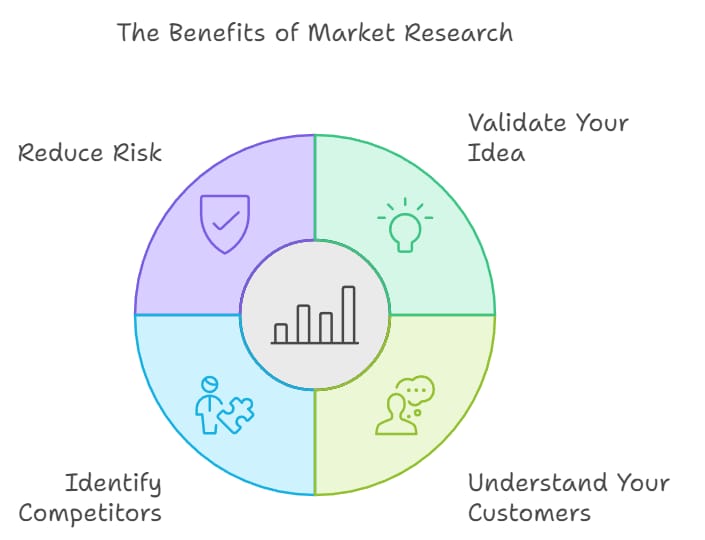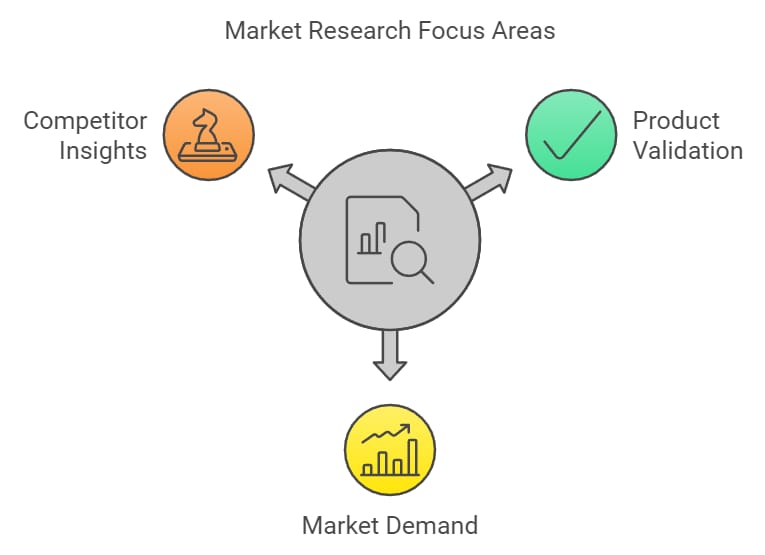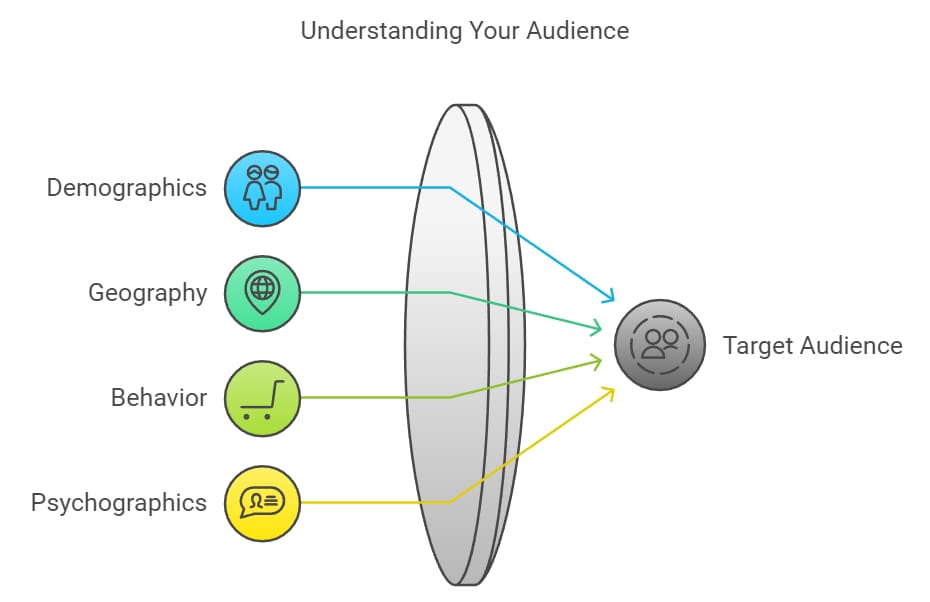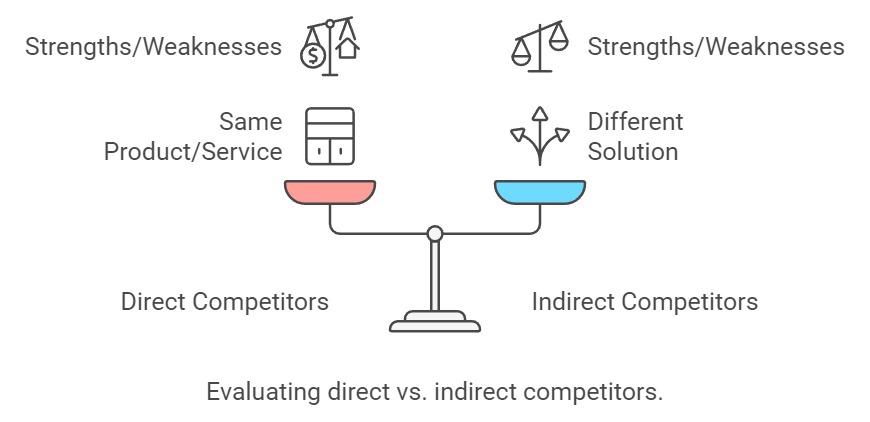- Insight Forge
- Posts
- Market Research for Startups: A Step-by-Step Guide to Unlocking Business Growth
Market Research for Startups: A Step-by-Step Guide to Unlocking Business Growth
Market research is one of the most critical steps in the journey of building a successful startup. It helps you identify your target audience, understand the competitive landscape, and validate your business idea. For startups, market research is more than just a formality—it's the foundation for making informed decisions that can save time, money, and effort.In this guide, we’ll break down the process of conducting market research for startups with actionable steps, real-world examples, and data points to ensure you're set up for success.
Why Market Research is Essential for Startups
As a startup founder, you may have an innovative idea or product, but jumping into the market without research is risky. According to CB Insights, 42% of startups fail because there is no market need for their product. Market research ensures that you’re solving a real problem, for the right people, and in the right way.
Here’s what market research helps you achieve:
Validate Your Idea: Ensure there's a demand for your solution.
Understand Your Customers: Learn about their needs, preferences, and pain points.
Identify Competitors: Find out who your competitors are and how you can differentiate yourself.
Reduce Risk: Minimize the chances of launching a product that doesn’t resonate with your audience.

Step 1: Define Your Research Goals
Before diving into research, it’s important to clearly define your objectives. What are you trying to learn?
Are you validating a new product idea?
Are you trying to understand market demand?
Do you need insight into your competitors’ strategies?

Example:
When Dropbox launched, their main goal was to validate the need for cloud storage among small businesses and individuals. Their market research focused on understanding how people currently stored their files and what features were most important to them.

Step 2: Define Your Target Audience
For startups, understanding your audience is crucial. Market research helps you get detailed insights into your ideal customers, from their demographics to their behaviors and motivations.
How to Define Your Target Audience:
Demographic Information: Age, gender, income, education level.
Geographic Information: Where do they live?
Behavioral Information: What are their buying habits?
Psychographic Information: What are their interests, values, and lifestyles?

Example:
When Airbnb started, they defined their target audience as budget-conscious travelers seeking unique accommodations. By understanding this segment, they could refine their product offering and build a platform that catered to both guests and hosts.
Data Point:
According to a Nielsen survey, 59% of consumers prefer personalized brand experiences, which is why defining your audience is so critical to the success of your startup.

Step 3: Choose Your Research Methodology
There are two main types of market research that startups can use—primary and secondary research. Depending on your goals and resources, you may choose one or both.
Primary Research: This involves gathering new data directly from your audience. It can include surveys, interviews, focus groups, or direct observation.
Surveys: Easy to distribute via online platforms like Google Forms or SurveyMonkey.
Focus Groups: Great for qualitative insights but may require more resources.
Secondary Research: This involves using existing data that’s publicly available. Industry reports, competitor analysis, and market statistics can help you understand trends and benchmarks.
Example:

When Zappos was considering how to improve customer satisfaction, they used both primary research (surveys) and secondary research (analyzing competitors' customer service models). This combination gave them a 360-degree view of their market and helped them build a legendary customer service strategy.
Step 4: Conduct Competitor Analysis
Competitor analysis is especially important for startups, as it helps you understand who’s already solving the problem you’re tackling. This will allow you to differentiate your product, avoid potential pitfalls, and find your unique value proposition.
Steps for Competitor Analysis:
Identify Direct and Indirect Competitors: Direct competitors are those who offer the same product/service. Indirect competitors solve the same problem differently.
Analyze Their Strengths and Weaknesses: What are they doing right? Where are they falling short?
Use Tools for Deeper Insights: SEMrush, Ahrefs, and SimilarWeb are great tools to understand your competitors' SEO, traffic, and marketing strategies.

Case Study:
Spotify conducted competitor analysis to understand how traditional radio and music platforms worked. Their research revealed a gap in personalized listening experiences, which led to Spotify’s core feature—customized playlists based on user behavior. This differentiation helped Spotify dominate the music streaming industry.

Data Point:
Research shows that 72% of startups that conduct thorough competitor analysis report higher success rates in refining their product positioning (Source: Harvard Business Review).
Step 5: Collect and Analyze Data
Once you’ve conducted your research, it’s time to collect and analyze the data. For primary research, tools like Google Sheets or Excel can help you organize and analyze the data. For qualitative data (like interviews or focus group insights), look for common themes or patterns that will guide your decision-making.
Key Metrics to Analyze:
Market Size: How big is the market for your product?
Demand: What’s the level of interest in your product?
Customer Preferences: What features, benefits, or price points do customers prioritize?
Example:
When launching Tesla’s Model 3, Tesla gathered data from early reservations and feedback to identify trends in demand for an affordable electric car. They realized that customers were willing to wait longer for deliveries if it meant a higher-quality product, helping them plan production accordingly.

Step 6: Interpret Your Results and Take Action
Now that you have your data, you need to turn insights into actionable strategies. What trends have emerged from your research? How does the data impact your product or go-to-market strategy?
Example:
After conducting market research, Slack identified a growing need for team communication tools that were easy to use and integrated with existing workflows. They adjusted their product roadmap to focus on integrations with other popular apps like Google Drive, leading to rapid adoption among companies.

Step 7: Monitor and Update Your Research Regularly
Markets change, and so do customer needs. Continuously monitor the market, customer feedback, and competitors to ensure that your product stays relevant.
Case Study:
Amazon constantly iterates on its product offerings by using market research to track consumer behavior. When they noticed a rising demand for voice-activated shopping, they introduced Alexa, revolutionizing e-commerce yet again.

Conclusion: The Key to Startup Success
For startups, market research is more than a one-time activity—it's an ongoing process that helps you refine your product, understand your audience, and position your business for success. By conducting thorough research, you reduce the risks associated with launching a new product and increase your chances of achieving long-term growth.
Data Point:
Startups that use market research effectively are 70% more likely to succeed in scaling their businesses, according to a study by McKinsey & Company.
Final Tip:
No matter where your startup is in its journey, investing in market research will always pay off. The more you understand your market, the better you can serve your customers and stand out from the competition.